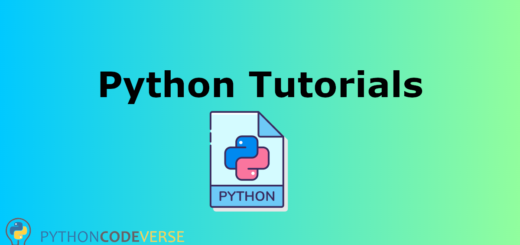Python Syntax
Python is a high-level programming language known for its simplicity and readability. Here are some fundamental aspects of Python syntax:
Statements and Indentation:
- Python uses indentation to define blocks of code instead of brackets or braces like other programming languages. It is recommended to use 4 spaces for indentation.
- Statements in Python are typically written on separate lines.
Example:
if x > 7:
print("x is greater than 7")
Comments:
- Comments are used to add explanatory notes to code and are ignored by the Python interpreter.
- Single-line comments start with the
#symbol, while multi-line comments are enclosed between triple quotes ('''or""").
Example:
# This is a single-line comment
'''
This is a
multi-line comment
'''Variables and Data Types:
- Variables are used to store values. In Python, you can assign a value to a variable using the
=operator. - Python is dynamically typed, meaning you don’t need to declare the data type explicitly. It is inferred based on the assigned value.
- Common data types in Python include integers (
int), floating-point numbers (float), strings (str), booleans (bool), and more.
Example:
x = 10
name = "John"
is_valid = True
Operators:
- Python supports various operators, such as arithmetic operators (
+,-,*,/,%,**), comparison operators (==,!=,>,<,>=,<=), logical operators (and,or,not), assignment operators (=,+=,-=,*=,/=,%=), and more.
Example:
x = 10 + 5
y = (x > 5) and (x < 20)
Conditional Statements:
- Python has
if,elif, andelsestatements for conditional execution. - Indentation is crucial to define the block of code executed under each condition.
Example:
if x > 10:
print("x is greater than 10")
elif x == 10:
print("x is equal to 10")
else:
print("x is less than 10")
Loops:
- Python provides
forandwhileloops for iterative execution. - Again, indentation is essential to define the block of code inside the loop.
Example:
for i in range(5):
print(i)
while x < 10:
print(x)
x += 1
These are just some of the basic syntax elements of Python. Python offers a vast set of libraries and advanced features to accomplish various programming tasks.

